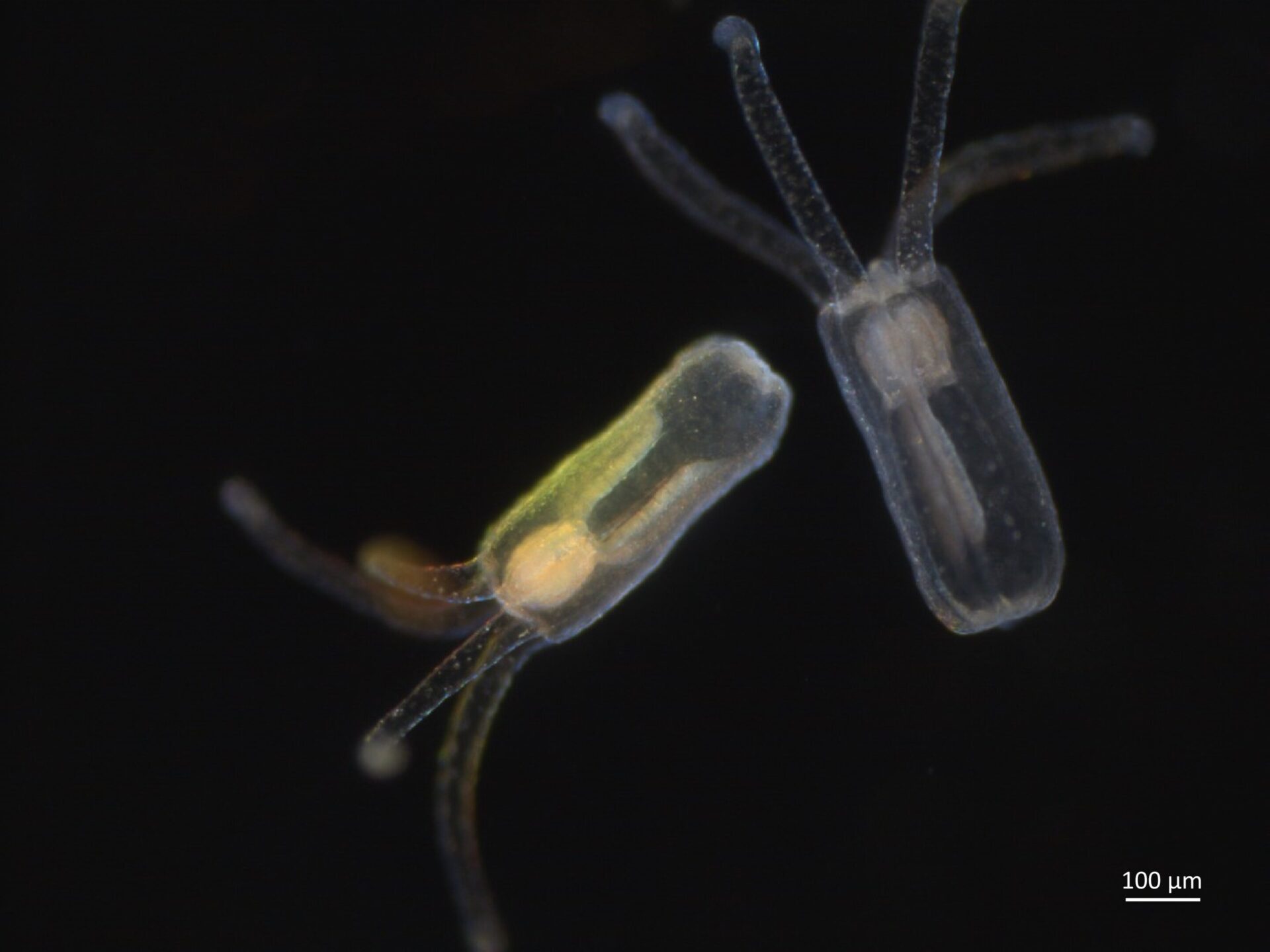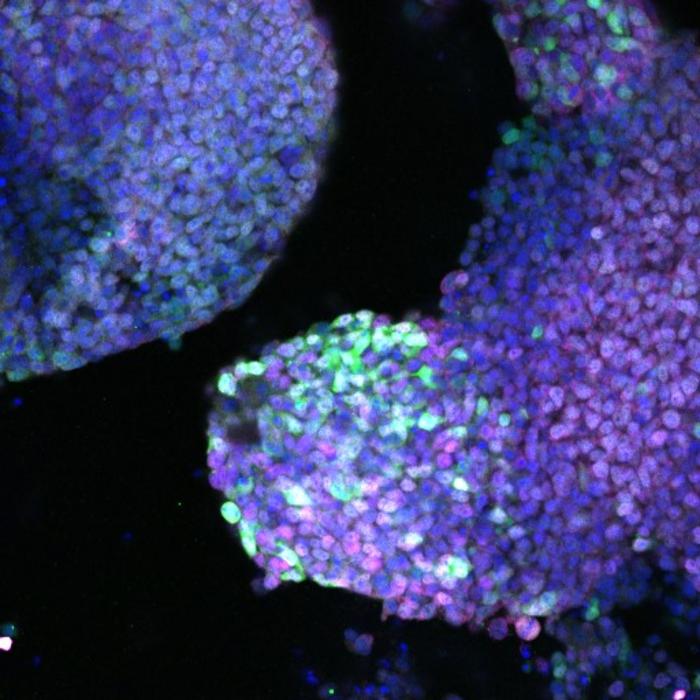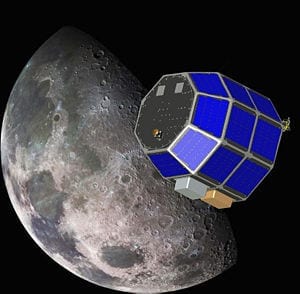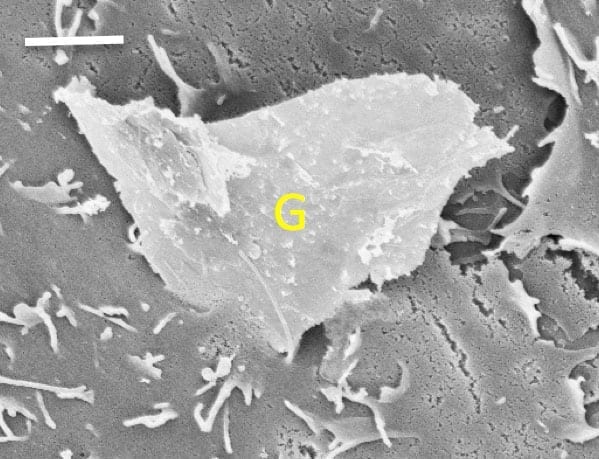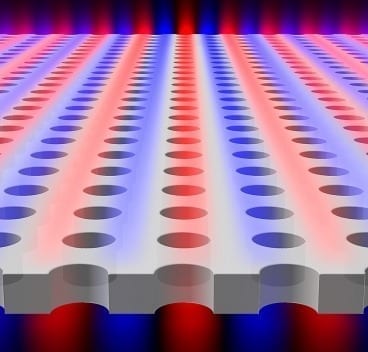
MIT researchers discover a new phenomenon that could lead to new types of lasers and sensors.
There are several ways to “trap” a beam of light — usually with mirrors, other reflective surfaces, or high-tech materials such as photonic crystals. But now researchers at MIT have discovered a new method to trap light that could find a wide variety of applications.
The new system, devised through computer modeling and then demonstrated experimentally, pits light waves against light waves: It sets up two waves that have the same wavelength, but exactly opposite phases — where one wave has a peak, the other has a trough — so that the waves cancel each other out. Meanwhile, light of other wavelengths (or colors) can pass through freely.
The researchers say that this phenomenon could apply to any type of wave: sound waves, radio waves, electrons (whose behavior can be described by wave equations), and even waves in water.
The discovery is reported this week in the journal Nature by professors of physics Marin Solja?i? and John Joannopoulos, associate professor of applied mathematics Steven Johnson, and graduate students Chia Wei Hsu, Bo Zhen, Jeongwon Lee and Song-Liang Chua.
“For many optical devices you want to build,” Solja?i? says — including lasers, solar cells and fiber optics — “you need a way to confine light.” This has most often been accomplished using mirrors of various kinds, including both traditional mirrors and more advanced dielectric mirrors, as well as exotic photonic crystals and devices that rely on a phenomenon called Anderson localization. In all of these cases, light’s passage is blocked: In physics terminology, there are no “permitted” states for the light to continue on its path, so it is forced into a reflection.
In the new system, however, that is not the case. Instead, light of a particular wavelength is blocked by destructive interference from other waves that are precisely out of phase. “It’s a very different way of confining light,” Solja?i? says.
While there may ultimately be practical applications, at this point the team is focused on its discovery of a new, unexpected phenomenon. “New physical phenomena often enable new applications,” Hsu says. Possible applications, he suggests, could include large-area lasers and chemical or biological sensors.
The Latest Bing News on:
Trap light
- Top Gear star locked in bitter row with council over turning his posh street into ‘dumping ground DEATH trap’on May 9, 2024 at 3:20 am
A TOP Gear star is locked in a bitter row with a council over turning his posh street into a “dumping ground death trap”. Retired racing driver Ben Collins, who was the BBC ...
- At the Aurora Fox: Let there be light | John Mooreon May 8, 2024 at 5:23 pm
The historic Aurora Fox Arts Center and its decaying, 60-foot-tall neon sign that has garishly yet unenthusiastically beckoned visitors to East Colfax Avenue for most of its 78 years, are both about ...
- ‘Manipulative Trap’ – Smotrich Slams Decision to Send Negotiation Team to Cairoon May 8, 2024 at 1:35 pm
“Sending the delegation to Cairo is a mistake and falls into the manipulative trap set by Hamas together with Qatar and Egypt,” the far-right politician said on X on Tuesday. “This is the time to ...
- Police Crack Down on St. Cloud Red Light Runnerson May 7, 2024 at 2:49 pm
So, I know first hand about the dangers of red light running. BAD DRIVERS IN ST. CLOUD? There's a story of legend I've heard repeated over the years here in the Granite City. I do ...
- 3 Cheap and Easy Ways to Make a DIY Mosquito Trapon May 7, 2024 at 9:38 am
Learn More › Itchy bites make mosquitoes a nuisance in any setting, but they’re especially aggravating when they violate your backyard. If you want to enjoy your yard without having to bathe in bug ...
- The Actress Who Showed Her ‘Thirst Traps’ On ‘SNL’ Reached Out To Dua Lipa On Social Mediaon May 6, 2024 at 4:00 pm
One of the highlights of Dua Lipa ‘s SNL hosting debut was “The Anomalous Man.” ...
- See The Cast of 'The Parent Trap' 26 Years Lateron May 2, 2024 at 9:54 am
There is nothing quite like the 1998 hit movie The Parent Trap, whichwas a remake of the popular 1961 movie of the same name. It follows a pair of twins who meet each other for th ...
- Run the Red Lighton May 1, 2024 at 6:30 pm
When Liz returns to camp, Venus tells her, “Don’t worry. We’ve all wanted to do that to Q at least once,” yet she is the only person who has. That’s good for Liz. The ultimate irony is that there is ...
- The 40mph ‘death trap’ e-bikes wreaking havoc on Britain’s streetson May 1, 2024 at 8:00 am
Powerful e-bikes that reach speeds of nearly 40mph are being ridden illegally across Britain because of a lack of effective policing, motorcycle manufacturers have claimed ...
- Light Waves Brought to a Stop in a Crystal Promises New Ways to Control Photonson April 28, 2024 at 11:53 pm
Finding new ways to slow fleeting waves of light or even stop them in their tracks could lead to more advanced photonic devices, such as lasers, LED displays, fiber-optics, and sensors.
The Latest Google Headlines on:
Trap light
[google_news title=”” keyword=”trap light” num_posts=”10″ blurb_length=”0″ show_thumb=”left”]
The Latest Bing News on:
Unexpected phenomenon
- Unexpected beauty revealed in ice formationon May 8, 2024 at 6:37 pm
George's experiment to create clear ice leads to rediscovery of dendritic patterns, revealing intricate beauty in ice formation processes.
- Expert view: Unexpected election outcome could disrupt Indian stock market, says Trivesh D. of Tradejinion May 8, 2024 at 4:00 pm
Trivesh D., COO at Tradejini, believes the general election outcome may not significantly impact the stock market in the short run, but the long-term impact could be significant. Thematic-based ...
- Ozempic babies: A surprise side effect of weight loss drugson May 7, 2024 at 11:00 pm
Women taking Ozempic or similar drugs for diabetes or weight loss are taking to social media to commiserate about an unexpected side effect — "surprise pregnancies," said The Washington Post. There is ...
- Researchers discover spontaneous liquefaction of solid metal–liquid metal interfaces in colloidal binary alloyson May 6, 2024 at 7:37 am
The boundary between solid metal and liquid metal can be much less "solid" than we ever suspected. RMIT researchers have discovered that the liquid-solid boundary can fluctuate back and forth, with ...
- Game Interface Glitch Uncovered in CS: A New Bug Discoveredon May 5, 2024 at 10:45 am
The Counter-Strike community was left in awe and disbelief upon the discovery of a perplexing new bug, triggering a whirlwind of discussions among players worldwide. Keen-eyed enthusiasts recently ...
- Season 6 Trailer for ‘Unexpected’ Is Here: Meet the New — and Returning — Couples (Exclusive)on May 2, 2024 at 5:00 pm
Young love is not all it’s cracked up to be for the teenage couples featured on the new season of TLC’s Unexpected. The TLC series follows five couples and their families as they navigate ...
- Researchers find unexpected roadblock to conductivity in Mott insulatorson May 2, 2024 at 6:06 am
In the realm of condensed matter physics, few phenomena captivate physicists' curiosity as much as Mott insulators. According to traditional theory, this odd class of materials should be capable of ...
- Unexpected slowdown in economic growth stokes uncertainty for Bidenon April 25, 2024 at 8:25 am
The big question now is what this report suggests will happen going forward. The worst-case scenario for the president would be for the economy to continue to slow while inflation stays elevated.
- Scientists spot ‘glory effect’ on a world beyond our solar system for the first timeon April 19, 2024 at 9:19 am
“This discovery leads us to hypothesize that this unexpected glow could be caused ... If astronomers are able to observe the faint signal of a phenomenon such as a glory from hundreds of light ...
- Supernatural Storyon April 11, 2024 at 6:58 pm
Supernatural occurrences and unexpected phenomena, in what seems to be or not to be. An action atmospheric storyline that will keep you on the edge of your seat and make you hunger for more.
The Latest Google Headlines on:
Unexpected phenomenon
[google_news title=”” keyword=”unexpected phenomenon” num_posts=”10″ blurb_length=”0″ show_thumb=”left”]




